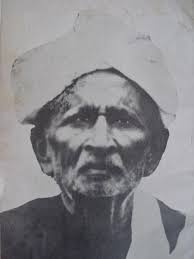M S Puttanna was a person who toiled for the revival of Kannada right from the beginning. During his initial days, he worked for a while along with Venkatakrishnayya and B M Srinivasa Iyengar, and later, on his own. I’ve heard that M S Puttana began his career with a government job at the Chief Court. He used to work as a translator. There is an interesting anecdote of those bygone days. In the Chief Court of those days, the manager of the office was one Bhimaji Rao. An announcement was made for the post of an office assistant in the Chief Court. This vacancy attracted several aspirants. Venkanna Shrauti and Krishnaswamayya were two such aspirants. Bhimaji Rao met them in person, chatted with them, and told them to see him after a week to know of his final decision. The manner in which Bhimaji Rao spoke instilled confidence in Shrauti, who was hopeful of getting the job. Bhimaji Rao then called his colleague M S Puttana and asked him in Telugu: Bhimaji Rao: Hey, what’s the meaning of śrauti? Puttanna: Well, śrauti is one who adheres to śruti. And śruti refers to the Vedas and the various rituals prescribed in them, like yajñas. Śrauti is one who conducts these rituals. B: In that case, is he a brāhmaṇa? P: Yes, a superior class of brāhmaṇas! B: Oh, I thought otherwise. He is a BA graduate and seems to be intelligent and I thought he must be from a different caste, so I promised him the job. Filled with a lot of hope, Venkanna Shrauti met Bhimaji Rao after a week’s time. Rao gave Shrauti a handwritten piece of paper and asked him to read it. Since it was written in the Mōḍi script [ancient cursive style of writing Kannada], Shrauti struggled to read it. Upon seeing this, Bhimaji Rao said, “What’s this man? You said you are a Kannadiga but you don’t seem to know how to read Kannada!” He raised this objection and sent Shrauti back. The job was offered to someone else. Disheartened at the turn of events, Shrauti shared his despair with H V Nanjundaiah, who was then the Deputy Commissioner of Shivamogga. Nanjundaiah wrote a letter to M S Puttana in this regard. “That poor Shrauti lost a job opportunity because of you! The word ‘śrauti’ can also mean ‘one who holds the pitch (śruti) in music.’ When a person is playing the Nagaswara, isn’t there always someone in the back who keep the pitch? So you should have said that Shrauti hails from the musicians and artists caste. If you had said so, it would have fetched him the job. Poor fellow, his hopes are crushed and he’s suffering. This is the result of your truthfulness!”
M S Puttanna was a man of integrity. He never tolerated bribes and any form of corruption. To the wicked, he was like fire. He used to get agitated with lies, deceit, and malpractice. He was a man of great purity. Puttanna was highly impressed by Diwan Rangacharlu’s competence and discipline; right from his student days, and even after that, he was deeply influenced by Rangacharlu. He often spoke with Rangacharlu. Puttanna was one who saw poverty right from his early days. He was transferred from the Chief Court to the Revenue Department as an amaldar (Chief Revenue Collector). While he held the post of amaldar, his detachment and selflessness became more widely known. After his retirement from his government job he worked as a lawyer for some time. It was during this period that he was the secretary of the Kannada Sahitya Parishad. Right from the beginning, Puttanna had a keen interest in language and literature. He translated Shakespeare’s play Cymbeline into Kannada with the name ‘Jayasiṃharāja Carite.’ He translated into Kannada the children’s book, The History of Sandford and Merton, which is a gem of a story (by Thomas Day). One can find several of his books all over the place. Among all of those, Nīti Cintāmaṇi was praised the most in the genre of children’s literature. M S Puttanna’s biography of Kunigal Ramashastri, Māḍiduṇṇo Maharāya, Mūsaga Tegeyē Māyāṅganē, and other novels illustrate the social setting and culture of Mysore’s past. The lifestyle, conduct and character, aspirations, opinions, mores and manners, and customs and practices of people belonging to the regions Mysore, Srirangapatna, Melkote, Nanjanagud, and Chamarajanagar during the period from 1850-60s to 1900s come alive in M S Puttanna’s writings. Puttanna’s writing style was lucid. His language was simple and mimicked the common usages of people. In his writings, we find usage of idioms that are natural to Kannada. He respected young and upcoming writers. I still remember the time he came looking for me with the intention of encouraging my attempt to translate the philosopher John Stuart Mill’s essay On Liberty. Puttanna interest in public affairs was deep and intense. For a long time, he managed the Bangalore Rate-payers’ Association." He worked sincerely in many such organizations. Puttanna was one among those who built and strengthened the pillars of the Kannada Sahitya Parishad.
This is an English translation of the sixteenth chapter of D V Gundappa’s Jnapakachitrashaale – Vol. 3 – Sahityopasakaru by Raghavendra Nagaraja and Hari Ravikumar.















































